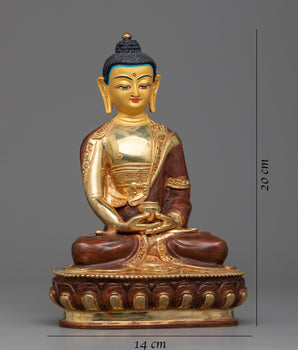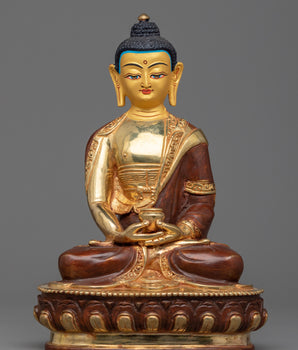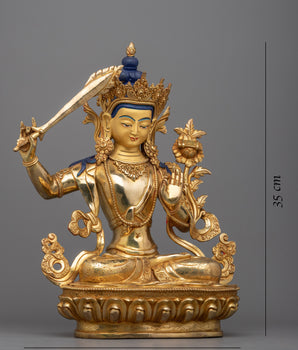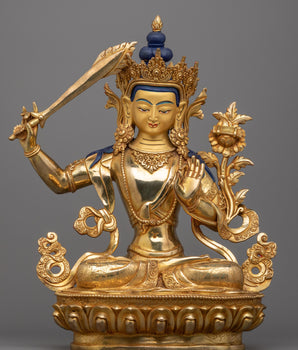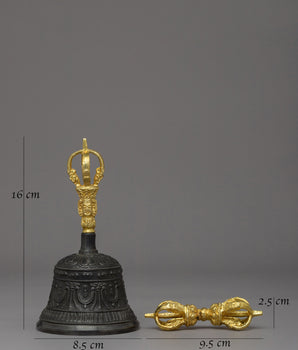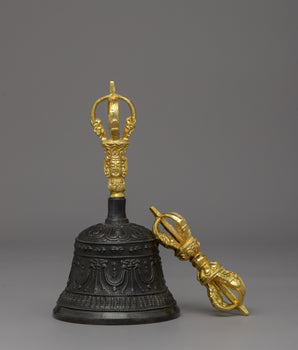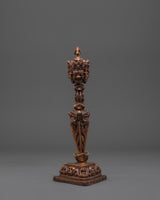
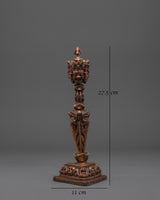
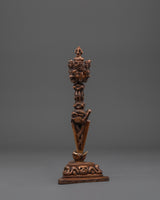
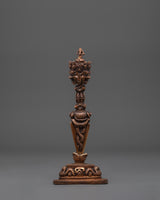
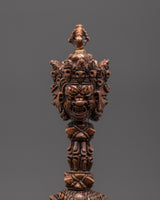
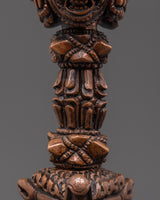
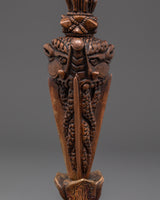
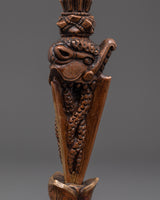
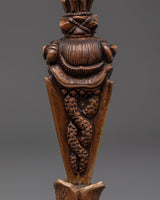

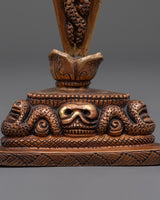
Handmade Copper Phurba | Tibetan Buddhist Ritual Dagger for Ceremonies
Handmade Copper Phurba for Altar | Meditation and Spiritual Practice
--------------------------------------------
Size: 27.5cm(Height) x 11cm(Width)
Weight: 1.45kg
Materials: Copper Body
--------------------------------------------
About The Ritual Item :
This Handmade Phurba is a potent ritual dagger used in Tibetan Buddhist ceremonies to suppress hostile forces and transmute destructive energies into beneficial energies. The phurba, or Vajra Kila, is a sacred implement that represents wisdom, compassion, and spiritual protection. It is fundamental to tantric rituals, where it is utilized to establish stability, dispel illusions, and summon heavenly forces.
This phurba, expertly carved from a copper body, stands 27.5cm tall, 11cm wide, and weighs 1.45kg. The detailed carvings depict protecting deities, wrathful expressions, and traditional patterns, demonstrating the perfection of Himalayan artistry. The three-sided blade represents conquering ignorance, attachment, and aversion, the three poisons of Buddhist philosophy, while the handle and crown frequently portray guardian deities who protect the practitioner.
The ritual phurba is used in Tibetan Buddhist ceremonies to anchor energy and preserve sacred locations. Beyond ritual application, it is a spiritual relic that represents transformation, stability, and protection. Whether utilized by practitioners, collectors, or enthusiasts of holy Himalayan art, this handcrafted copper phurba adds symbolic depth and cultural authenticity to any setting.
Introduction To The Phurba :
The ceremonial dagger (Sanskrit: Kila; Tibetan: phurba) is essential for expelling evil and is considered particularly effective in neutralizing the forces obstructing Tantric Buddhist practice. It has ancient origins, first appearing in the Indian Rig Veda as the core blade of the vajra used by Indra to destroy the primordial cosmic snake Vritra. Kila, derived from Sanskrit, was most likely associated with Vedic sacrifices. Meditation on the Vajrakila Tantra, an early Indian scripture first promoted in Tibet in the eighth century by Padmasambhava, one of the founding teachers of Tibetan Buddhism, is used to invoke the three-headed Vajrakila Buddha.
How to Set Up Your Buddhist Shrine?
Find a clean, quiet, and uncluttered spot.
Please set up an altar table and cover it with an altar cloth that calls to you.
Place your sacred item (statue, thangka, or a picture of Buddha) at the center.















